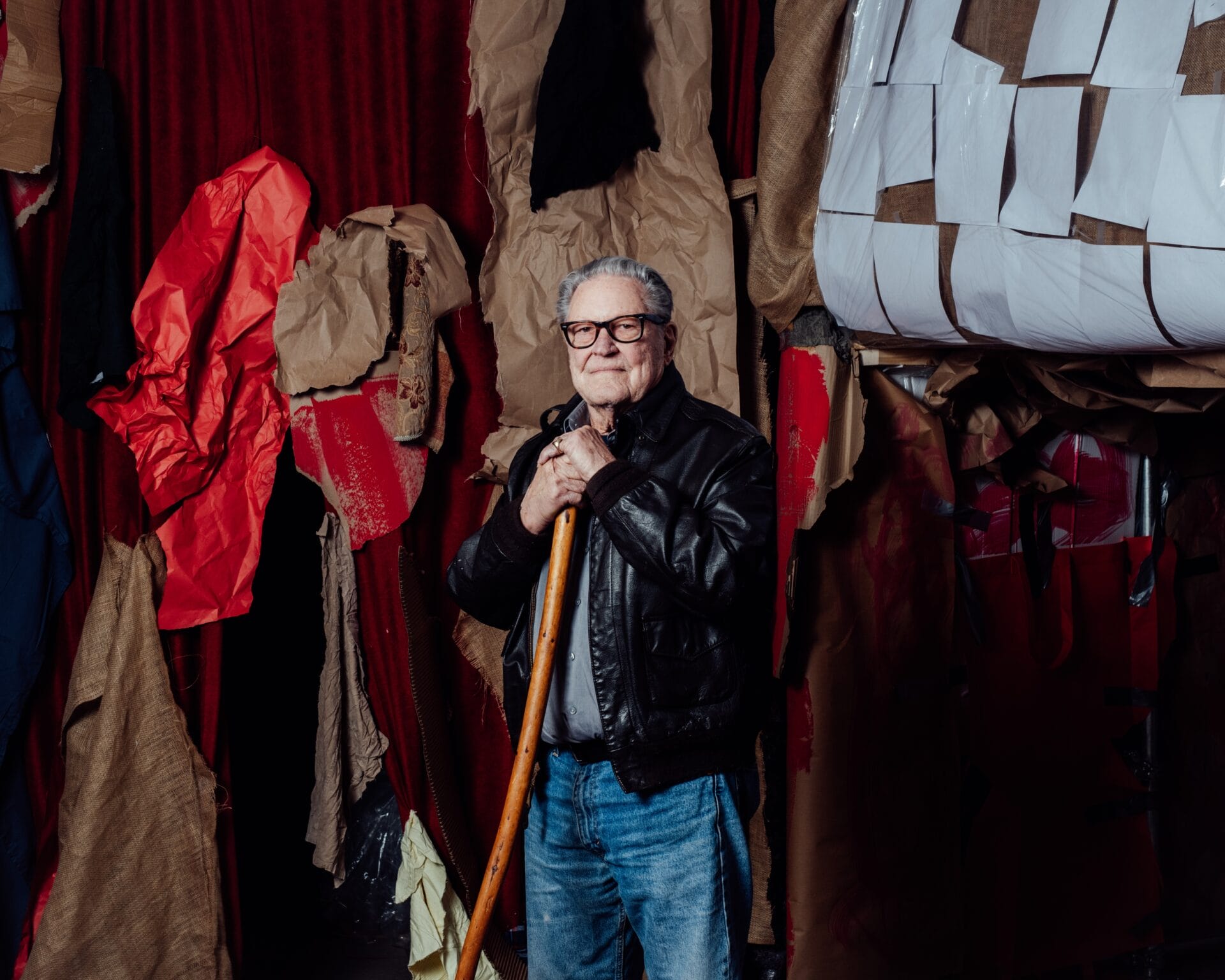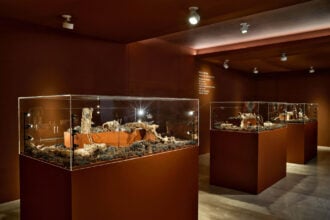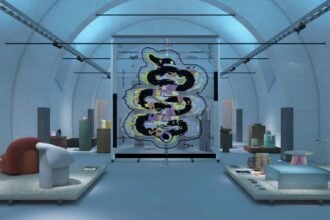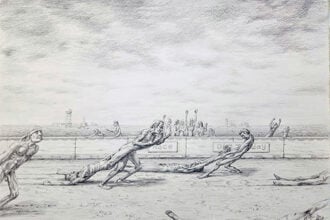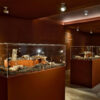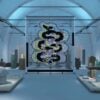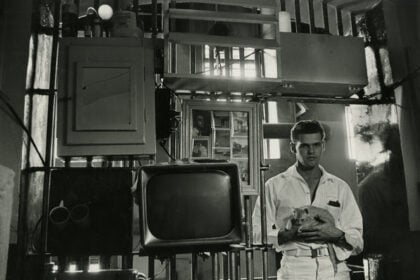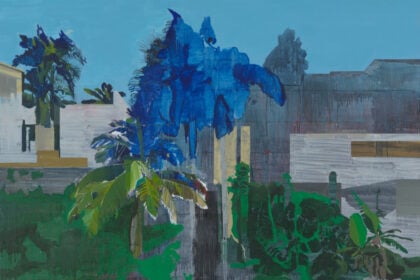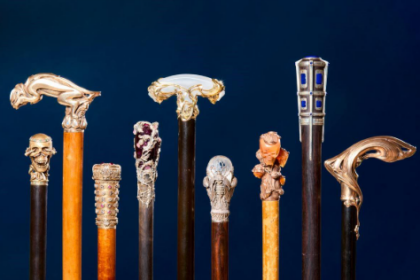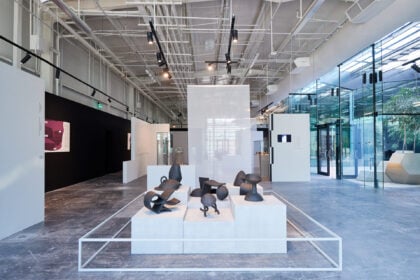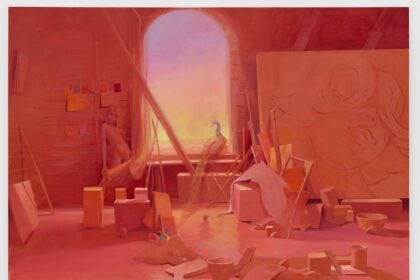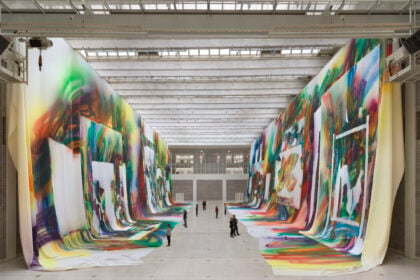A pioneer of performance and multimedia installation work, Whitman devoted his career to extending the boundaries of art as we know it. He was a seminal figure in the performances called Happenings—a hybrid art form spanning installation, performance, and other mediums—presented in New York in the early 1960s by a group of artists that also included Claes Oldenburg, Allan Kaprow, Jim Dine, and Red Grooms, and he was also at the vanguard of scientifically and technologically engaged art making during this period, having co-founded, with artist Robert Rauschenberg, the Experiments in Art and Technology (E.A.T.), a collective that supported creative partnerships between artists and engineers, in 1967.
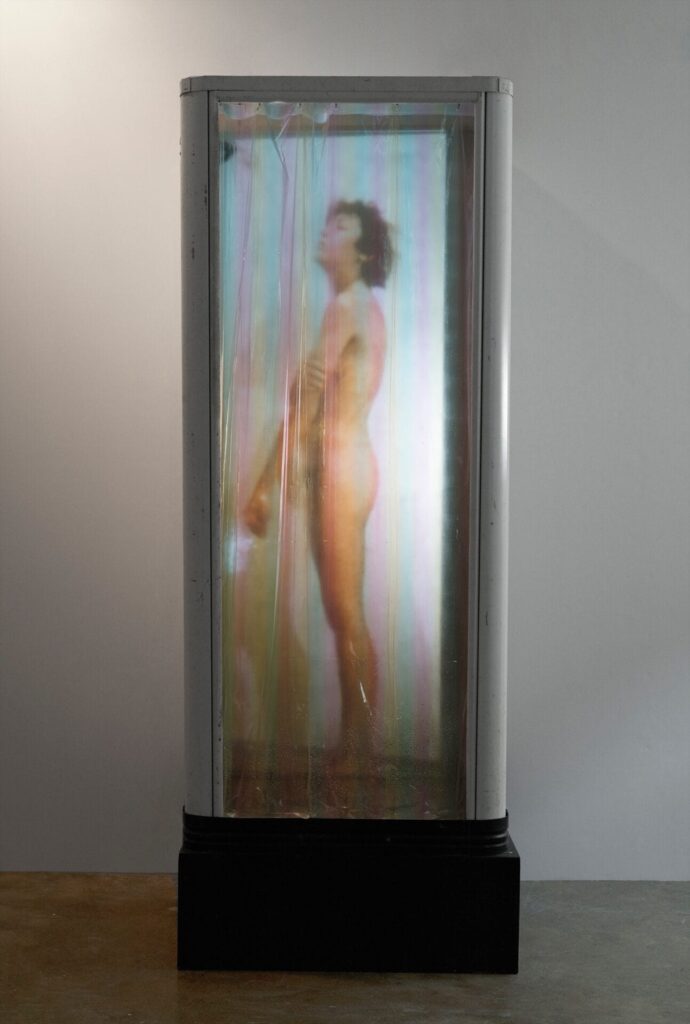
That same year, in 1967, he had his first solo exhibition with Pace at its West 57th Street gallery in New York. Titled Robert Whitman: Dark, the show featured two laser installations that Whitman created in collaboration with Eric Rawson, an engineer with Bell Telephone Laboratories: Wavy Red Line, in which a spinning red laser produced a fixed red line, growing and shrinking at specific intervals across four walls, and Solid Red Line, in which a laser drew itself around the four walls and, when it met its end, erased itself.
Since its presentation of Robert Whitman: Dark, Pace has mounted eight solo exhibitions of the artist’s work. In 2023, the release of Whitman’s generative art project New Worlds coincided with Pace’s re-staging of his storied 1960 performance work American Moon—a production realized as part of the experimental Happenings scene—at its New York gallery.
“It would be difficult to overestimate Bob Whitman’s importance in the artistic milieu of 1960s New York. Bob was a true pioneer. His Happenings blurred the line between dreaming and waking life. Somehow, he made the fantastic real. His many amazing collaborations in performance were unforgettable, none more so than the 9 Evenings he did with Rauschenberg. From the beginning, I was deeply intrigued by his vision, and I remained astounded by his brilliance over the course of seven decades of our friendship. Working together was one of the great privileges of my life.”
—Arne Glimcher
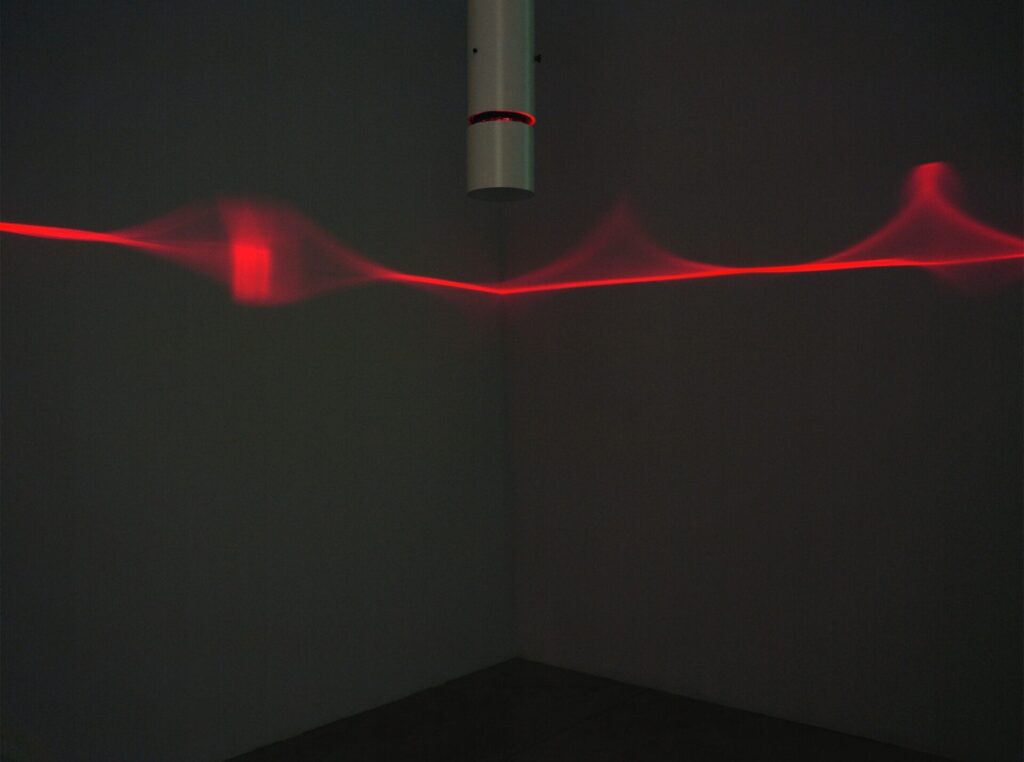
Born in New York in 1935, Whitman was introduced to several major figures in New York’s postwar art scene while studying at Rutgers University in New Jersey in the 1950s. Among those he met were Kaprow and George Brecht, both of whom were faculty members at the university at the time, and fellow student and artist Lucas Samaras.
He soon became immersed in the theatrical, scrappy, madcap Happenings staged by artists on New York’s Lower East Side in the 1950s and 1960s. Alongside Samaras, Oldenburg, and others, Whitman established himself as a leading figure in the Happenings, a legendary movement that is foundational in Pace’s institutional history and helped shape the history of art in the 20th and 21st centuries.
Among the artist’s most famous performances as part of the Happenings scene was American Moon, which premiered at the Reuben Gallery in New York on November 29, 1960 and was performed ten times through early December of that year. The original presentation of American Moon—for which the artist constructed an immersive environment made with construction paper, used fabrics, and scrap lumber—featured Whitman himself, fellow artists Samaras and Simone Forti, and other performers. Incorporating flashes of light, moments of total darkness, film projections, and cacophonous sounds, American Moon induced feelings of awe and disorientation in audience members, who watched the event from semi-enclosed tunnels built as part of the set. The final portion of the performance saw Samaras suspended on a swing above the installation.
In 2023, four live performances of American Moon, set amid a recreation of Whitman’s original set for the work, were presented at Pace’s New York gallery. The large-scale set constructed for these performances was the cornerstone of an exhibition of Whitman’s preparatory drawings for the project from the 1960s. The artist’s release of New Worlds—his first and only series of generative, interactive NFTs, which depict imaginary planetary bodies in space— coincided with the gallery’s in-person exhibition and performances of American Moon.
“The thing about theater that most interests me is that it takes time,” Whitman once said. “Time for me is something material. I like to use it that way. It can be used in the same way as paint or plaster or any other material. It can describe other natural events.”
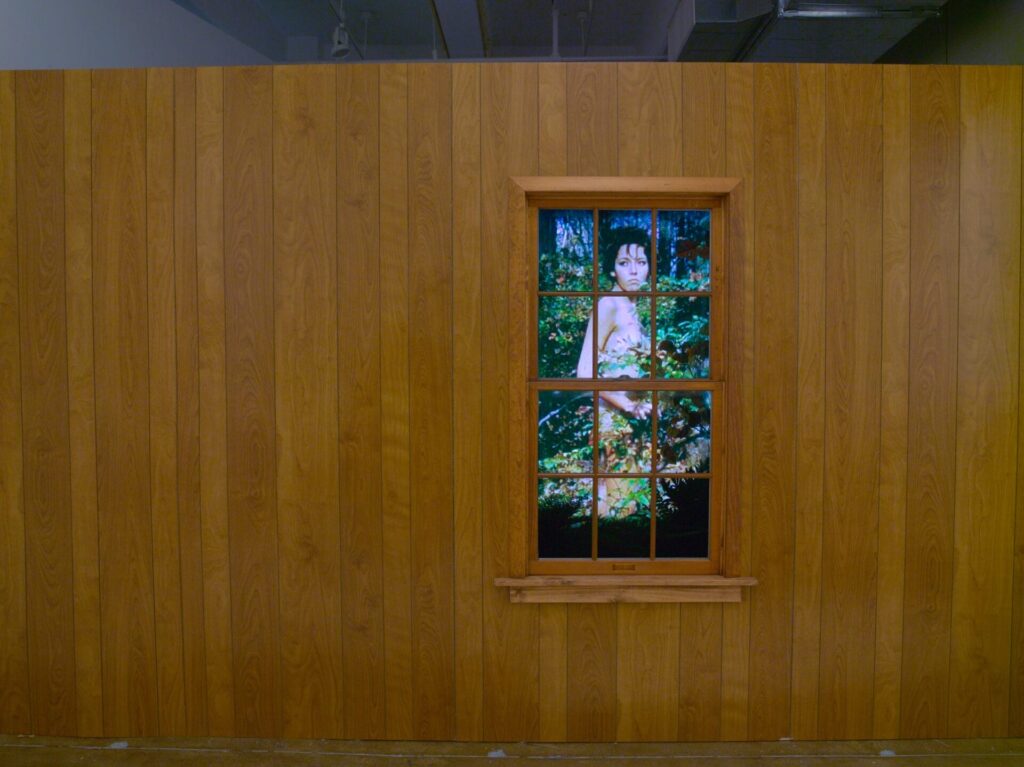
Throughout his career, Whitman was guided by a deep interest in innovation and the imaginative potential of movement, sound, material, and time. Co-founding Experiments in Art and Technology (E.A.T.) with engineers Billy Klüver and Fred Waldhauer along with Rauschenberg in the late 1960s, Whitman contributed to the early performance series 9 Evenings: Theatre & Engineering, held at the 69th Regiment Armory in New York in 1966 before the collective was formally established. Widely regarded as the group’s most ambitious and celebrated project, this interdisciplinary, multi-day event featured performances engaging new technologies and unorthodox formats. The series included works by Whitman, Rauschenberg, John Cage, Yvonne Rainer, Lucinda Childs, and other creative luminaries. In 1970, when E.A.T. designed the Pepsi Pavilion for the 1970 World Expo in Osaka, Japan, Whitman spearheaded the concept for the large-scale spherical mirror installed above the main space of the interior and a laser installation in a subterranean exhibition space.
Today, Whitman’s work can be found in major public collections around the world, including those of the Museum of Modern Art in New York; the Walker Art Center in Minneapolis; the Smithsonian American Art Museum in Washington, D.C.; the Moderna Museet in Stockholm; the Centre Pompidou in Paris; and other institutions.
Pace is a leading international art gallery representing some of the most influential contemporary artists and estates from the past century, holding decades-long relationships with Alexander Calder, Jean Dubuffet, Barbara Hepworth, Agnes Martin, Louise Nevelson, and Mark Rothko. Pace enjoys a unique U.S. heritage spanning East and West coasts through its early support of artists central to the Abstract Expressionist and Light and Space movements.
Since its founding by Arne Glimcher in 1960, Pace has developed a distinguished legacy as an artist-first gallery that mounts seminal historical and contemporary exhibitions. Under the current leadership of CEO Marc Glimcher, Pace continues to support its artists and share their visionary work with audiences worldwide by remaining at the forefront of innovation. Now in its seventh decade, the gallery advances its mission through a robust global program— comprising exhibitions, artist projects, public installations, institutional collaborations, performances, and interdisciplinary projects. Pace has a legacy in art bookmaking and has published over five hundred titles in close collaboration with artists, with a focus on original scholarship and on introducing new voices to the art historical canon.
Today, Pace has seven locations worldwide, including European footholds in London and Geneva as well as Berlin, where the gallery established an office in 2023. Pace maintains two galleries in New York—its headquarters at 540 West 25th Street, which welcomed almost 120,000 visitors and programmed 20 shows in its first six months, and an adjacent 8,000 sq. ft. exhibition space at 510 West 25th Street. Pace’s long and pioneering history in California includes a gallery in Palo Alto, which was open from 2016 to 2022. Pace’s engagement with Silicon Valley’s technology industry has had a lasting impact on the gallery at a global level, accelerating its initiatives connecting art and technology as well as its work with experiential artists. Pace consolidated its West Coast activity through its flagship in Los Angeles, which opened in 2022. Pace was one of the first international galleries to establish outposts in Asia, where it operates permanent gallery spaces in Hong Kong and Seoul, along with an office and viewing room in Beijing. In spring 2024, Pace will open its first gallery space in Japan in Tokyo’s new Azabudai Hills development.
